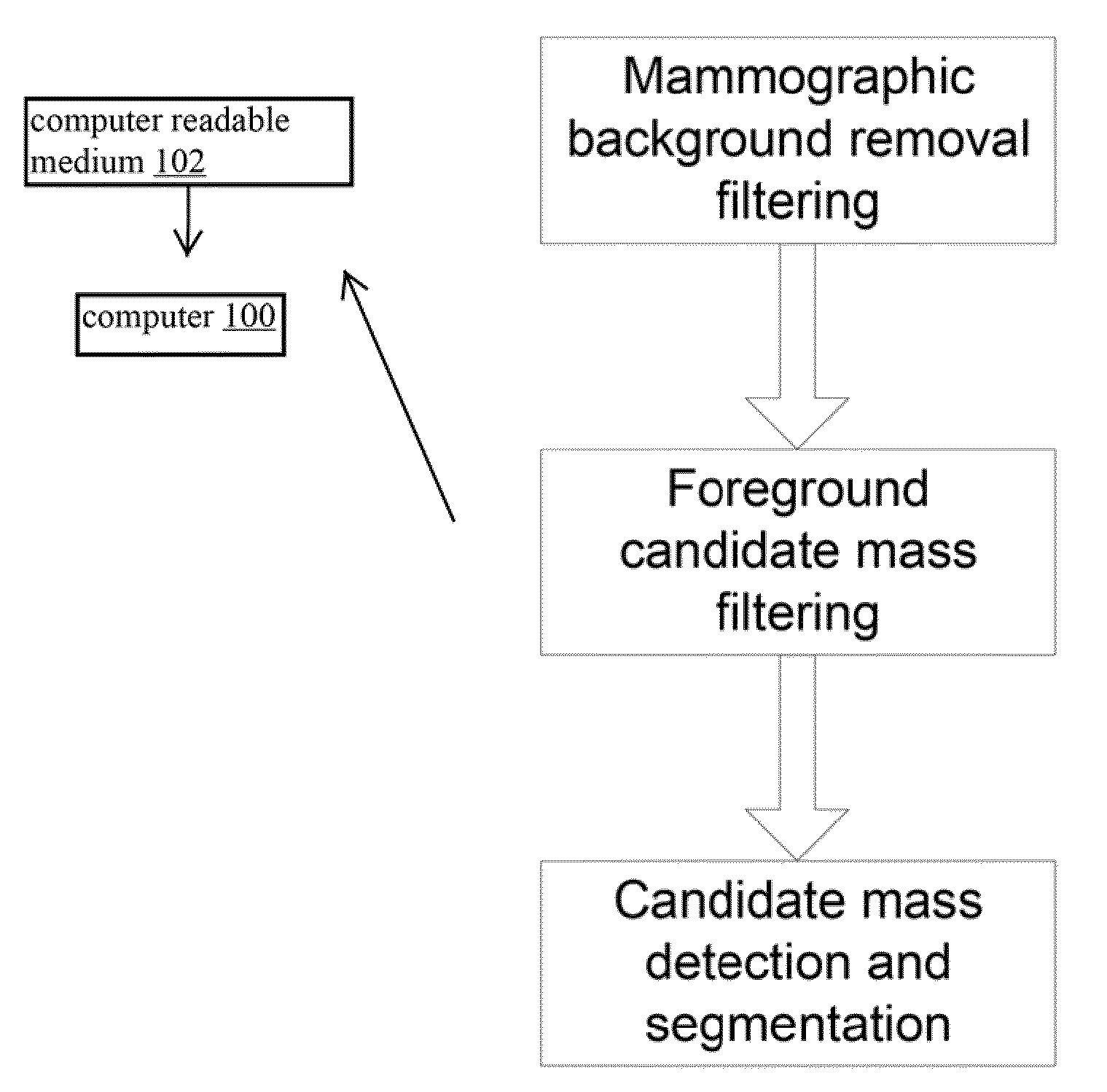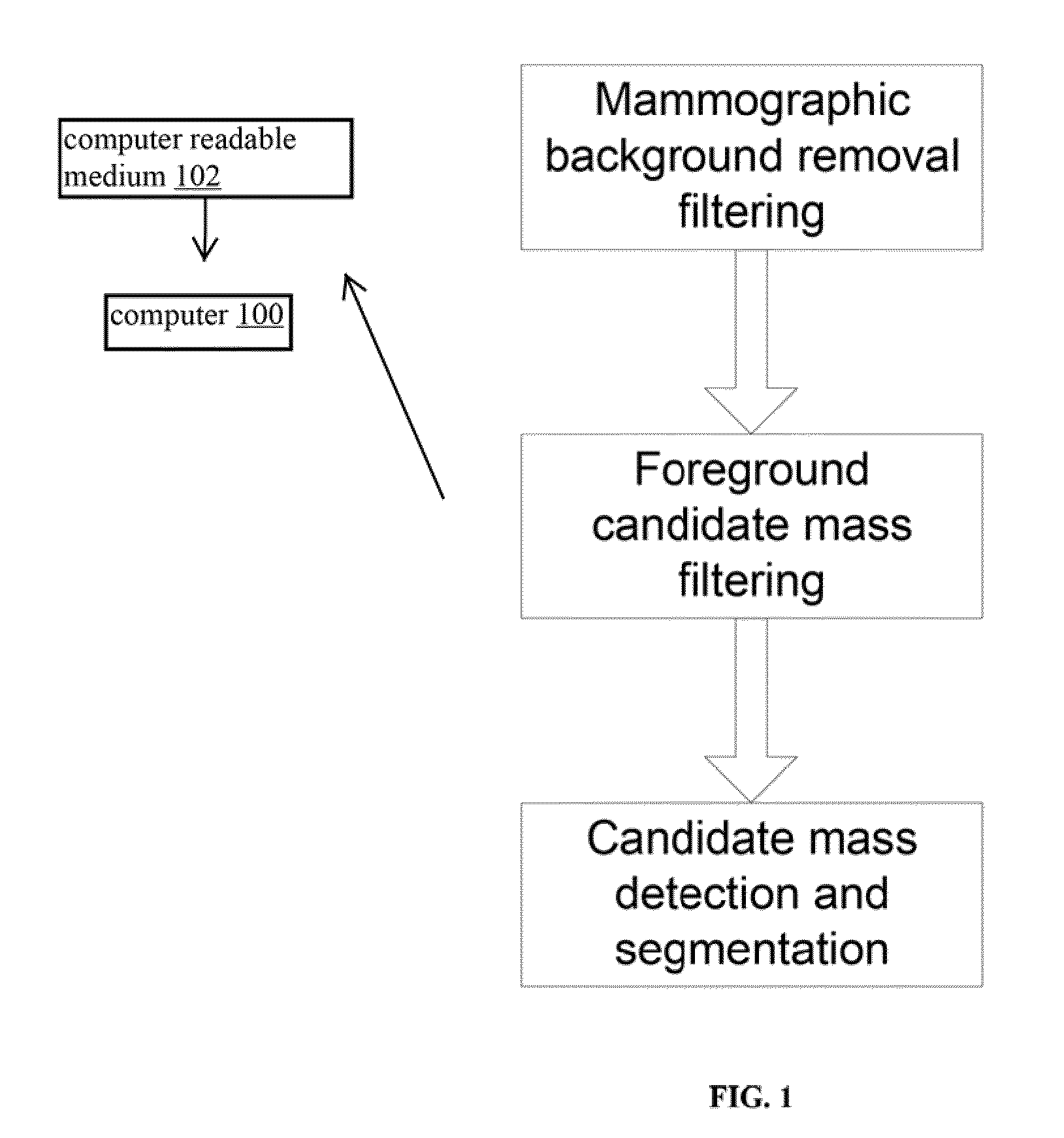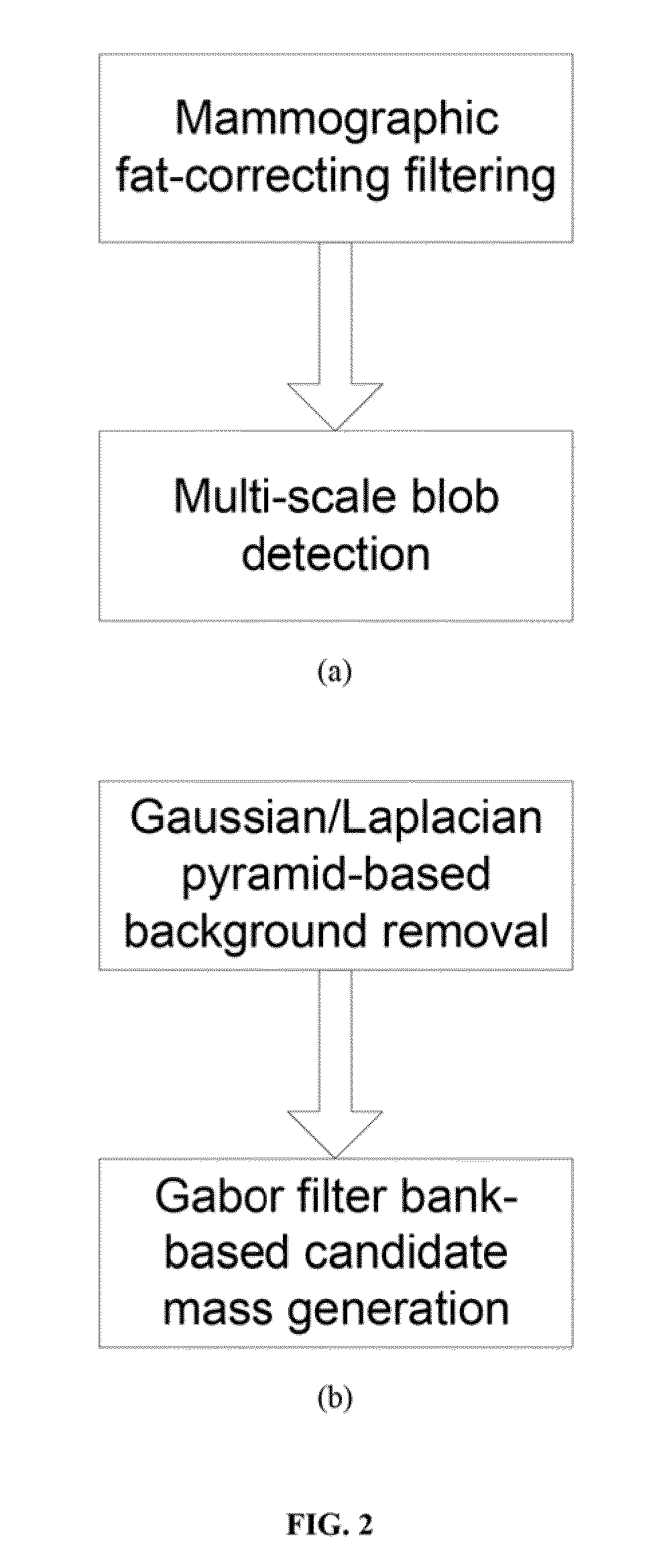Method for Mass Candidate Detection and Segmentation in Digital Mammograms
a technology of mass candidate detection and digital mammograms, applied in image analysis, image enhancement, instruments, etc., can solve problems such as complex equations that must be solved
- Summary
- Abstract
- Description
- Claims
- Application Information
AI Technical Summary
Benefits of technology
Problems solved by technology
Method used
Image
Examples
first embodiment
[0068]The first embodiment focuses on a filtering approach taking into account a model of the fat background in the spatial domain. We base ourselves solely on the geometry of the breast with the basic assumption that the fat component inside the breast is larger than near the skin line. This will result in a robust computational scheme, which tracks a minimum-signal filter value radially outwards, starting from the central breast portion towards the breast skin line (and hence avoiding the overlap of profiles perpendicular on the breast outline). Instead of computing a height corrected image, a fat-only image representation is computed directly on the basis of the mammographic data, and this representation is further used to compute mammographic lesion candidates. These candidates are modeled as blobs with varying intensity and spatial extent and are extracted by a multi-scale maximum selection algorithm that looks both for local maxima of the Laplacian feature operator and for loc...
second embodiment
[0069]The second embodiment focuses on a filtering approach taking into account a model of mammographic mass content in the frequency domain. Masses, superimposing on the background signal, show up as mid-frequency signal components in the frequency domain; in the spatial domain they have finite extent. A wavelet-based approach is ideally suited to deal with these detection requirements in that the wavelet kernel is compactly supported in the spatial as well as frequency domain. A bank of filters is needed to address the wide variety of mammographic mass appearances. The wavelet filter bank that is adopted here is the Gabor filter bank that tiles the frequency plane in slightly overlapping Gaussian-shaped windows. The filter results are clustered and iso-filtered contours are computed that serve as a segmentation of the mammographic mass candidates.
[0070]The main assumption for generating regions containing candidate lesions is that the total mammographic breast content can be model...
PUM
 Login to View More
Login to View More Abstract
Description
Claims
Application Information
 Login to View More
Login to View More - R&D
- Intellectual Property
- Life Sciences
- Materials
- Tech Scout
- Unparalleled Data Quality
- Higher Quality Content
- 60% Fewer Hallucinations
Browse by: Latest US Patents, China's latest patents, Technical Efficacy Thesaurus, Application Domain, Technology Topic, Popular Technical Reports.
© 2025 PatSnap. All rights reserved.Legal|Privacy policy|Modern Slavery Act Transparency Statement|Sitemap|About US| Contact US: help@patsnap.com



